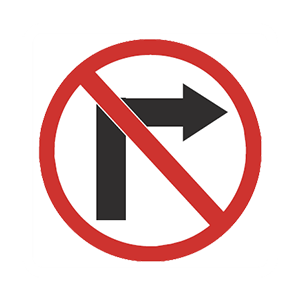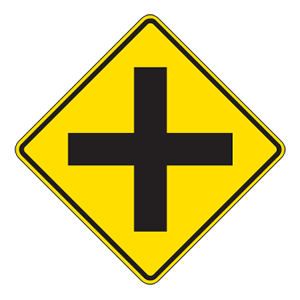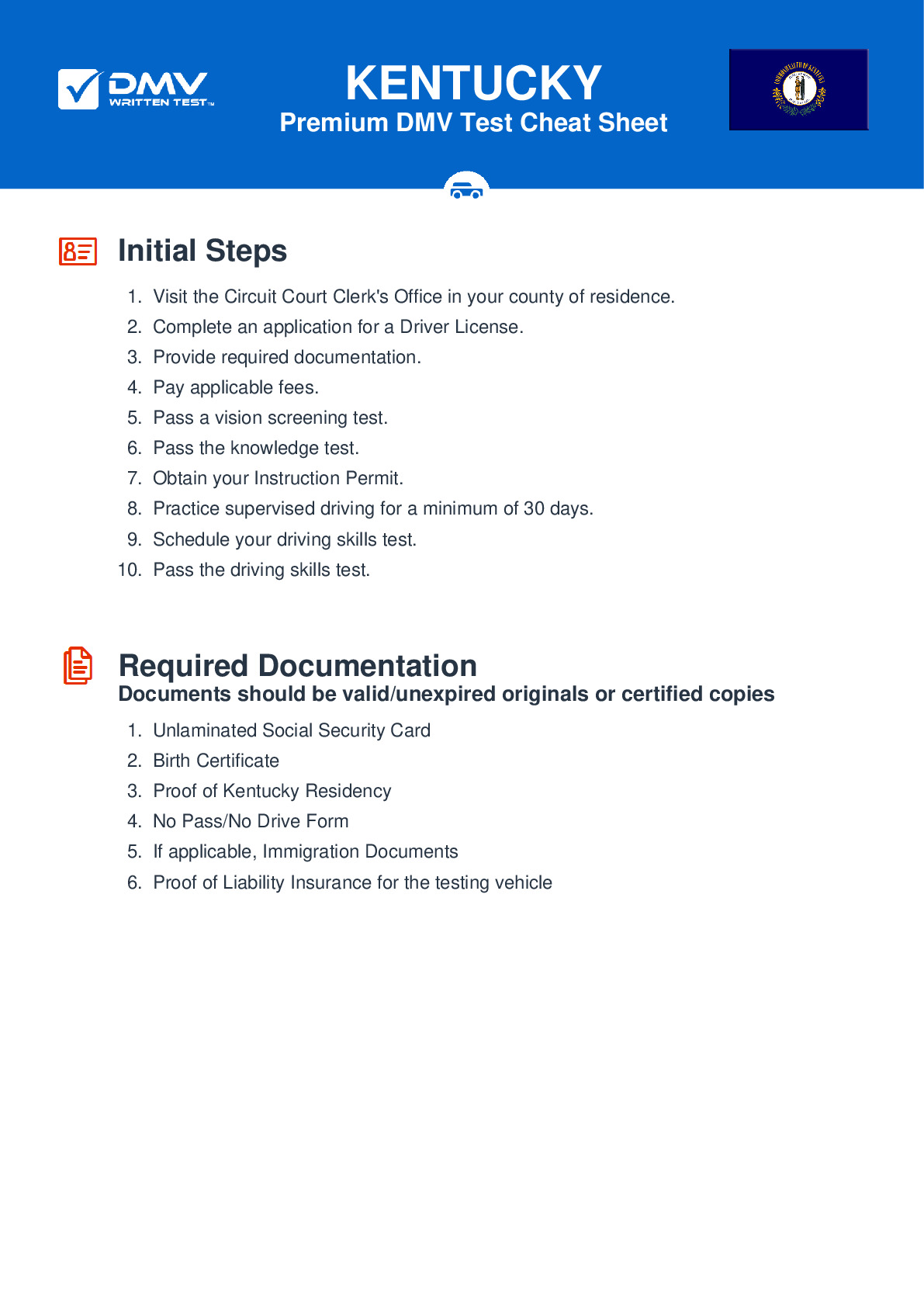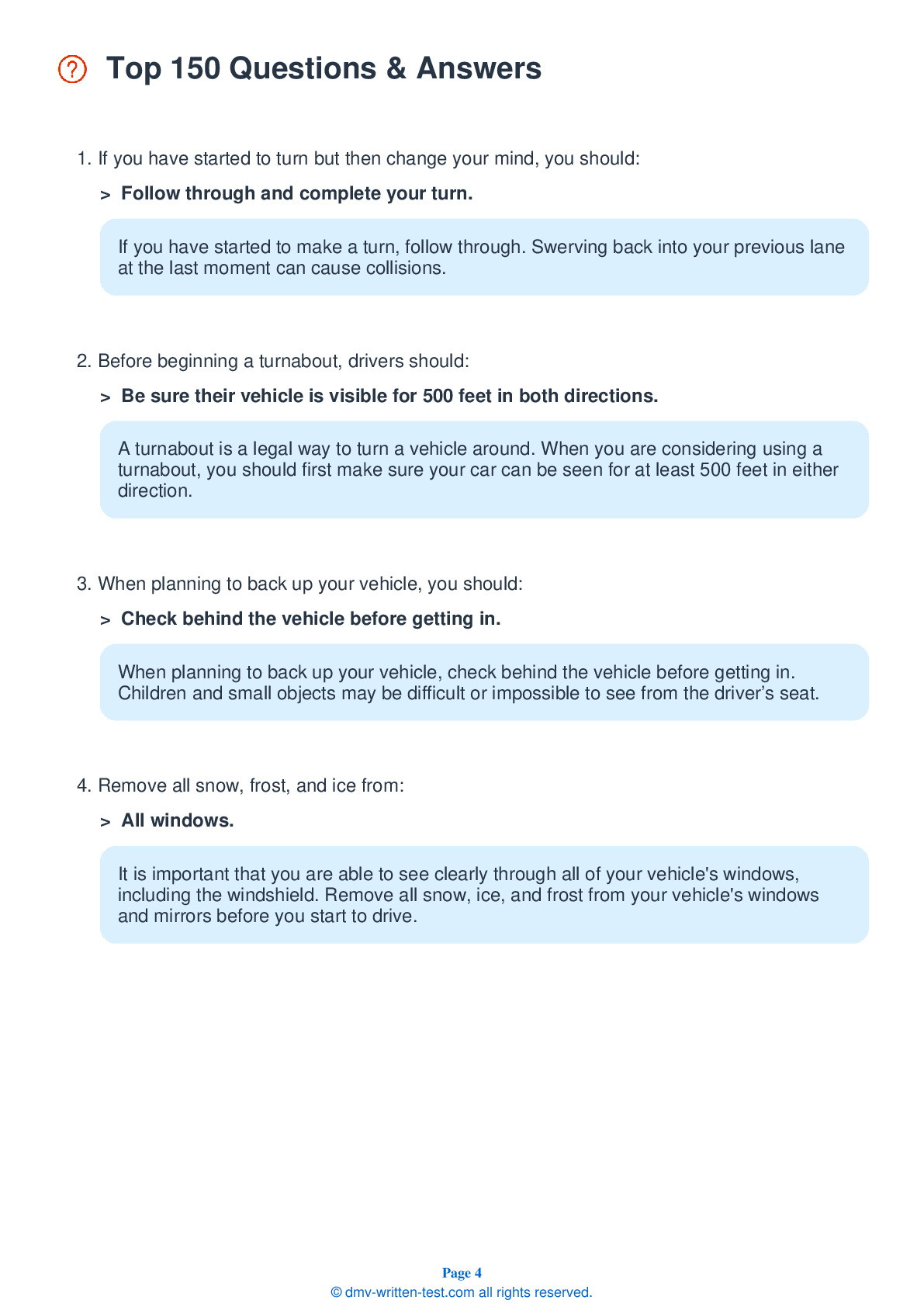2025 Kentucky Permit Test 8
The following questions are from real DMV written tests. These are some of the actual permit questions you will face in Kentucky. Each permit practice test question has three answer choices. Select one answer for each question and select "grade this section." You can find this button at the bottom of the drivers license quiz. For a complete list of questions and answers for Kentucky please visit https://cheat-sheets.dmv-written-test.com/en/kentucky/car.
Number of Tests
Number of Question
Passing Score
33. This sign means:

Explanation
This sign indicates that turns in the direction of the arrow (in this case, to the right) are prohibited.
34. You are approaching an intersection at the posted speed limit when the signal turns yellow. You should:
Explanation
A solid yellow light means "caution" and signals that the light will soon turn red. You should stop at a solid yellow light if you can do so safely; otherwise, you should cautiously cross the intersection.
35. You are involved in a minor collision at an intersection. There are no injuries and there is very little vehicle damage. You should:
Explanation
After a collision, if no one has been injured or killed and you can safely do so, you should move your vehicle out of the traffic lane.
36. This sign shows one type of:

Explanation
Warning signs are usually yellow with black markings. They alert you to conditions that are immediately ahead. This sign warns drivers that another road crosses the highway ahead.
37. Before beginning a turnabout, drivers should:
Explanation
A turnabout is a legal way to turn a vehicle around. When you are considering using a turnabout, you should first make sure your car can be seen for at least 500 feet in either direction.
38. You should not start across an intersection if you know you will block the intersection when the light turns red:
Explanation
Even if the signal is green, you must not enter an intersection unless you can get completely across before the light turns red. If you block the intersection, you can be cited.
39. To improve visibility lowered by rain or fog, drivers should use their:
Explanation
Use low beam headlights when driving in rain, snow, sleet, or fog. High beam headlights in adverse weather conditions lower visibility by reflecting off the precipitation and back into the driver's eyes.
40. On a freeway, you should look farther ahead than you would on a city street:
Explanation




